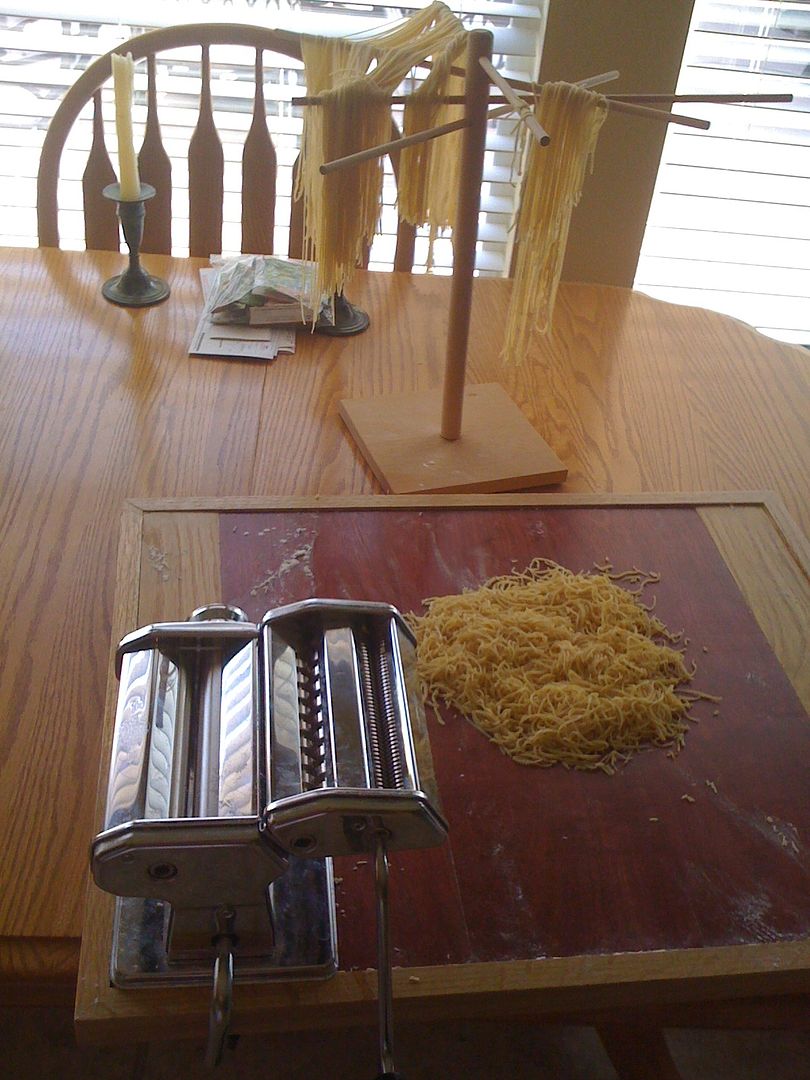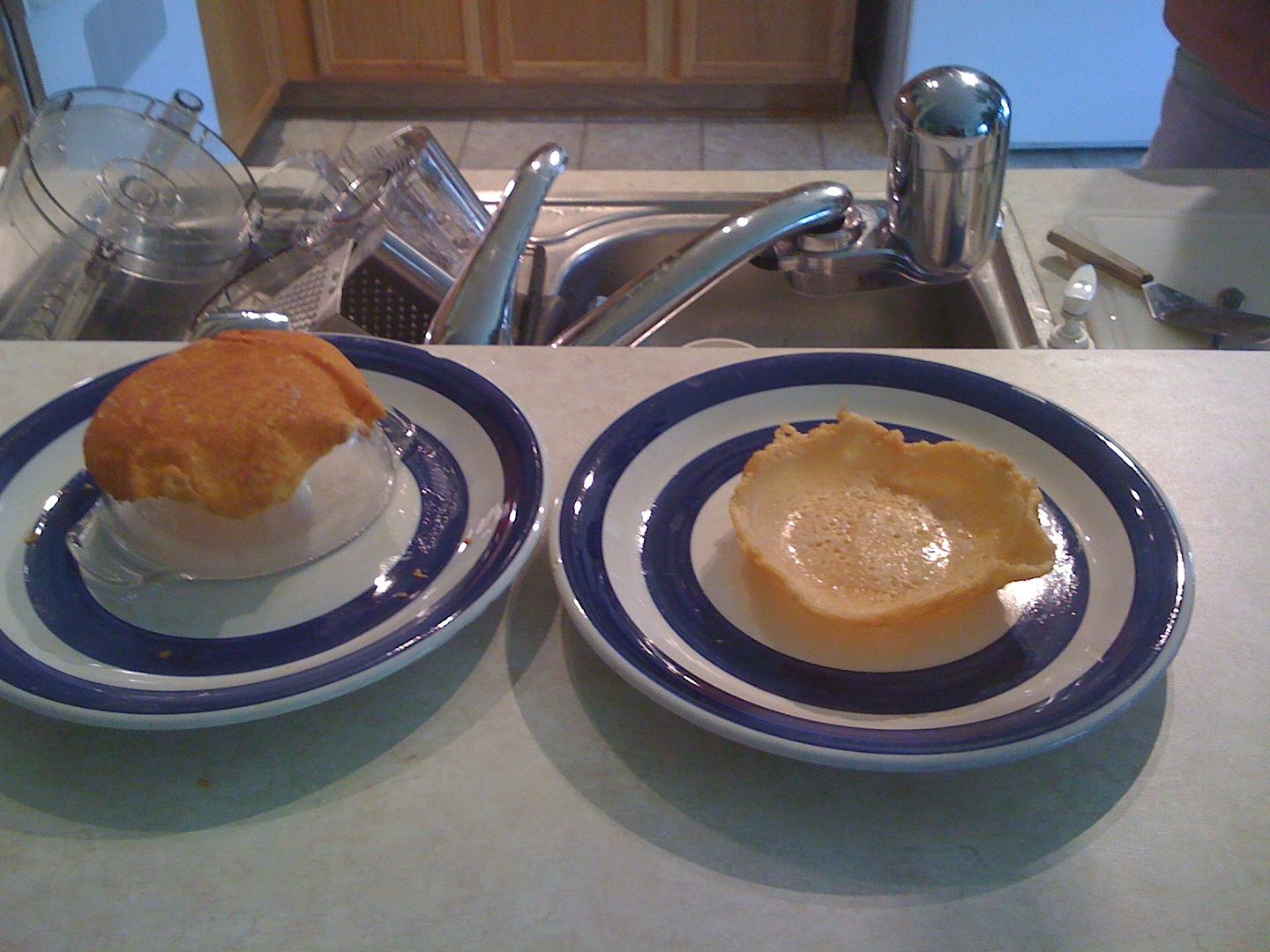I love fall and winter, and as y’all live where you do, y’all must as well, right? As far as food goes, these seasons are comfort food turf and that’s never a bad thing; any chance to enjoy the heartier fare is a good thing.
Christie wrote of next week, “Leeks will be in the bucket, so a post would be great. Sizes range from smallish on up to good-sized---although no really huge giants like you sometimes see in the supermarkets.”

Actually, this is good news; size matters with veggies to a degree, but probably in reverse order to umm, certain other topics… In other words, huge doesn’t mean quality when it comes to veggies. There’s a very good reason that ‘baby’ this and that are coveted more than their older siblings; they taste better, are generally more tender, and are much more fun to behold on a plate.
So what the heck is a leek anyway? Are they good, do we like them? They are, we do, and they’re of the same family as onions and garlic and that is why we do! Like their cousins, they are wonderful in many things, even standing as the center point of a dish or two. If you’re a foodie, you may have heard the term Ramp thrown around in the last few years; the ramp is simply a wild leek, FYI. Leeks are relatively rich in iron, vitamin c, manganese, folate and vitamin B6, all of which are good for ya, so dig in with confidence. Leeks are more common in stores than they used to be, although you’re still more likely to find green onions. A leek is, for my palate, a richer, deeper flavor profile than an onion, and for that reason, I like them a lot; it’s kind of like choosing shallot over onion, I guess…
When you prep a leek for cooking, keep in mind that the dark green upper leaves are generally tough and not something you want to nosh on, although you can clean ‘em up and use them for flavoring vegetable stock, which you really aughta do! The bulb and the white/light green lower leaves are what we want to go to town on. So, when you’re ready to cook, pull ‘em out, inspect ‘em and wash off any dirt or critters. Cut the dark greens off and set them aside for later. Cut the little root fringes off the bulbs and chuck those. Now do a pro prep move, and fill a bowl with cold water, toss in your leeks and gently wash ‘em until no dirt shows up in your water bowl, (It might take a couple of water changes to do). You’re now basically ready to use these guys.

So, what to make with leeks? Well, the sky really is the limit, so why not head to the internet for some inspiration? Seriously, you ask, a leek recipe website?! Yup, in fact leeks are, as far as I can tell, all they do; their recipes are great and broad in scope, so head on over there and start cooking!
No, wait, don't go: We have more to do here first… My personal favorite thing for leeks is stock and base for soup or stew: While leeks.org has a lot of stuff, I didn’t see anything on this stuff, so here goes.
One very important key to a good soup, stew, or stock is the presence of a vegetable element; it provides flavors you just can’t get without ‘em. And the key to that element is mirepoix; mirepoix, (mere pwah), is a schmancy French word for a very simple and important thing, namely onion, carrot and celery mixed together. This simple mix of 50% onion, 25% each carrot and celery, adds a depth and breadth to soup, stew, sauce, reduction, glaze, roux, and on and on; it’s that important. When you make mirepoix, prep your veggies based on what you’re going to use the mix for: If you’re making soup, a fine dice is good; if you’re gonna make a big batch of stock, you can cut big old couple-of-inch pieces and be just fine with that; get the picture? We want these wonderful veggies to deliver flavor evenly and completely. So, let’s do one for a nice fall soup.
1 cup 50%-50% mix of leek and sweet onion, ¼” diced
½ cup carrot, ¼” diced
½ cup celery, ¼” diced
Pinch of salt
Heat a tablespoon or two of olive oil in a sauté pan on low; add veggies and salt and sweat them.
Terminology Aside: “What is sweating, and why would I do it?” Well first off, it’s not hanging out to long in Texas heat… Sweating is the process of cooking veggies in a little fat, (Oil or butter or both), over relatively low heat. With sweating, we don’t want the veggies to brown or caramelize at all, as we would when sauteing; that can make for unpleasant burned or bitter note in a soup or stew. We just want our stuff to get translucent, (Especially the onions and leeks), give up some moisture, and start to concentrate and combine their flavor notes: The lower temperature is the key of course. Sweating is another one of those little tricks that separates the kids from the big pool. Aromatics, (Onion, garlic, leek, shallot, celery), are all kinda crunchy in texture: Sweating draws moisture and flavor and softens them up nicely; it is a big head start in making a soup that tastes fantastic right from the get go.
Heat 10 cups of water to a simmer, and toss in your mirepoix. Add salt and pepper to taste. Now add what floats your boat for a nice veggie soup; consider;
A couple nice tomatoes, diced
Cilantro
Potatoes, (Cooked to roughly ½ done, then diced and added)
Beans
Mushrooms
Parsley
Thyme
Bay Leaf
Dash of cayenne?
Smoked Paprika?
Smoked Salt?
Smoked or dried Chiles?
Simmer all for a good couple of hours, and enjoy! You can, as an alternative to sweating, roast your mirepoix in the oven for an earthier taste.
Use leeks in conjunction with our replacing onion and shallot for a really nice, subtle but potent flavor note; you’ll be very glad you did!
Notes on storage; leeks can be kinda potent, like their cousins. Store them whole in a paper bag in the veggie drawer of your fridge. Long term, the bottom line is these guys don’t store all that well: You can dry them, and if you freeze them, they must be as air tight as possible and used within a couple months, (After that they kinda get freezer burned and mushy). Of course if you make stock or soup/stew base, you can sure freeze that just fine.
Enjoy!















